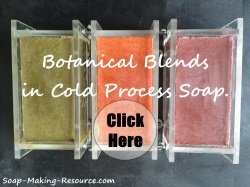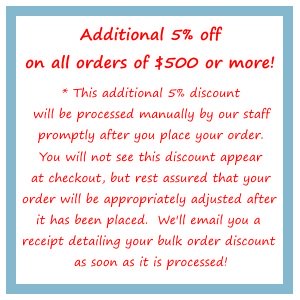Tallow Soap Making
Instead of sticking with all vegetable oils, some soap makers use beef tallow for soap making. Admitantly, I am not an expert in tallow soap making. In fact, at the time of this writing, I have never made tallow soap as I try to keep my creations 100% animal product free. Despite the negative stigma within the vegetarian and vegan communities (and even some other communities), there are some benefits of using tallow for soap making.
Let's take a look at the fatty acid, iodine and SAP values for tallow:
| Lauric | 2% |
| linoleic | 3% |
| linolenic | 1% |
| Oleic | 36% |
| Palmitic | 28% |
| Ricinoleic | 0% |
| stearic | 22% |
| myristic | 6% |
| Iodine Value | 45 |
| SAP Value Sodium Hydroxide | .143 |
| SAP Value Potassium Hydroxide | .200 |
When using tallow to make soap here are some of the characteristics that you will see within your finished product:
| Bubbly lather | Some |
| Creamy/Stable lather | Yes |
| Cleansing | Mild |
| Conditioning | Yes |
| Hardness | Yes |
Tallow does a great job of giving your soap a nice rich creamy lather and good conditioning properties, but does not clean overly well. Tallow will also add hardness to your bar. Although some people out there do make 100% tallow soap, If you do decide to use this ingredient, I recommend combining it with other soap making oils that clean a bit better.
Of course, there are some negatives associated with using tallow for soap making. If you are selling your soap, one of the big ones is label appeal. Many consumers like to see that their soap is made from vegetable oils only. This is partially because of the false belief, as discussed above, that tallow damages the skin.
|
Sign Up Today!
*Your information is SAFE with us! |
You also have to consider that many consumers don't understand the soap making process. The average customer doesn't realize that the tallow is actually turned into a different substance through saponification when it's combined with lye. As soon as they see tallow marked on your label some will immediately picture spreading animal grease all over their body and avoid your product entirely.
Then there's the vegetarian, vegan, Hindu, PETA and other animal friendly communities that must be considered. I can relate very well to these people because I myself am a vegetarian trying to go 100% vegan! When these individuals check your label (and believe me, they will check!) most will run the other way when they see that animal products are used. Some who are stricter in their beliefs won't even buy your all vegetable products if they know you are selling another product that uses animal fats.
On the other side of the spectrum, some consumers really do love tallow soap and will buy bar after bar. Only you can decide whether this ingredient is right for you or your soap business! If it's not for you, and you'd like to avoid this ingredient, you can use palm oil as an all veggie substitute. It will offer many of the same beneficial characteristics as tallow in your soap.
Return from tallow soap making to the soap making ingredients main page.











